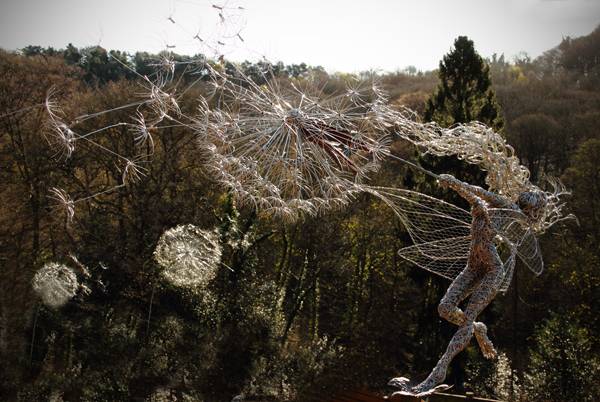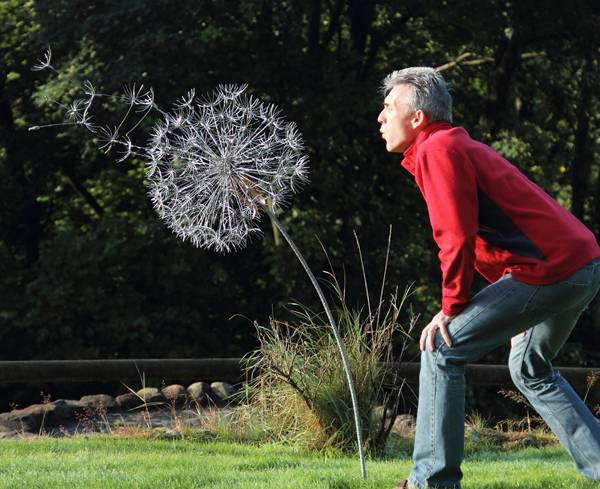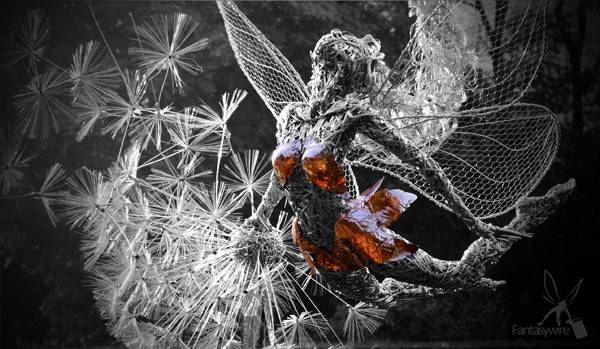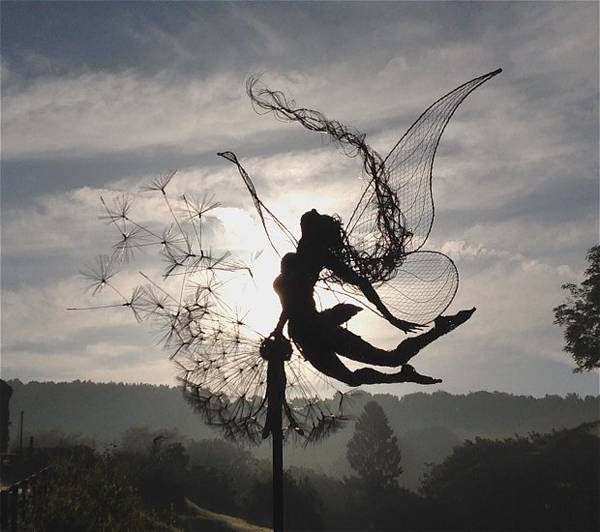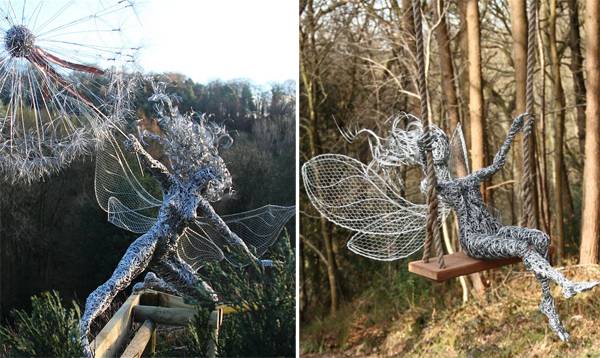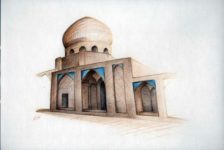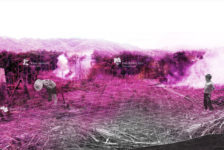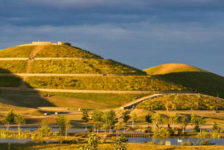Artistic wire sculptures from Fantasywire. Outdoor sculptures cannot be viewed as a separate entity from its surrounding environment. They are powerful in a sense that they have the power to change the way you read your surrounding, depending on their scale and design. Placing a sculpture within a landscape design means it can either enhance the space or give emphasis to design and planting throughout the year, or it can make the design look distasteful. For this reason, making and siting a sculpture involves all of the creative, intuitive and rational skills. Every so often, we manage to find talented artists who can make sculptural artwork blend beautifully well with the environment. Robin Wight from Fantasywire is one of those examples. He can transform our childhood fantasy into reality with his enchanting fairy sculptures made out of steel wires!
The company specializes in transforming our houses and gardens into a beautiful magical environment, filling our mundane lives with fascination. These days, the craze usually falls on modern sculptures of a rather abstract form. But Wight’s work differs considerably and leans towards the more traditional and delicate side. He has handmade fairy sculptures that are uniquely crafted to your own request from the fairy’s pose to the installation requirements! “Limitations are only created by the client’s imagination” This means the limitations are only created by the client’s imagination. He has crafted some of the most striking pieces that range from poses and scenarios (i.e. fairies leaping, dancing, levitating, stealing a watering can or creeping on your chimney); demonstrating that his imagination can stretch beyond the gravity of our reality. His fairies give a lot of scope for physical and emotional interaction. They have the ability to be able to relate to everything around it- be it the weather, the light, the vegetation, the close and long distance views. Some can even sway in the wind and all can create striking silhouettes during sunset. The Heart of the Fairy The unique thing about Wight also is that he is very open about the process behind his creations and describes the steps he takes in great detail. They start off with an idea or a sketch that is slowly transformed into a “real” fairy. The process involves creating a strong thick steel structure that is then wrapped with finer and finer wires- the thickest forming the fairy’s skeleton, the next thickest making up its muscle mass before the finest ones wrap the muscles to form the skin. At the “heart” of each fairy lies Wight’s signature stone “heart” pebble, which he buries at the fairy’s core, engraving these hearts with messages. It is hard to believe that they are made out of metal. They seem so weightless; the result is a beautiful flowing sculpture that can subtly change during different times of the day and one that can have the magical dialogue of sculpture and landscape. Imagine coming home to see a fairy sneaking down your chimney, leaping into the sunset or waiting to give you a handshake… Despite the sculptures being made out of steel, the movement and the attention to detail that Fantasywire is able to portray into these steel sculptures is truly astonishing and admirable. See also: Artistic Fire Pits For Long Summer Nights Wight creates giant dandelions that seem to disintegrate in the wind. It seems like Wight is able to use both his creative and rational skills to be able to enliven the surrounding environment. With swathes of planting and people animating the space, a landscape design is a living sculpture in itself. Wight’s work is a good example of how sculptures have to blend more sensitively into our designs if we do want a sculptural element. How can we keep pushing the boundaries of our imagination, beyond what has already been done to ensure that sculptures don’t look like just a piece of furniture within a landscape (capturing all of the attention) but one that can evoke our physical and emotional sensations whilst fitting in effortlessly with the design? Recommended reading: Sculpting in Wire (Basics of Sculpture) by Cathy Miles Wire Sculpture and Other Three-Dimensional Construction by Gerald F. Brommer Article written by Win Phyo Return to Homepage Published in BlogLogin
Lost Password
Register
If this is your first time on the new site, please click "Forgot your password?". Follow the steps to reset your password. It may be the same as your old one.



